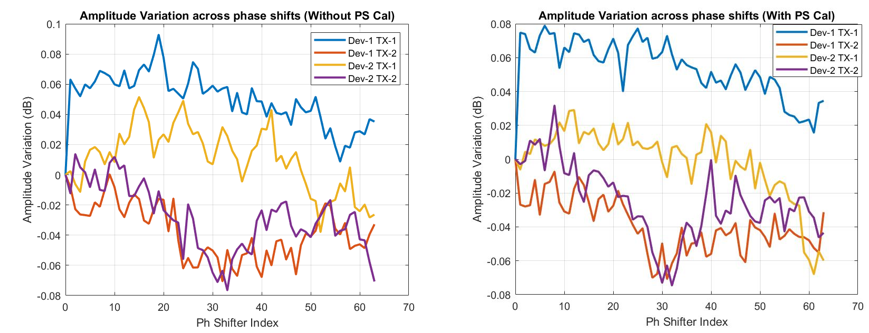SPRACV2 November 2020 AWR1843 , AWR2243
- Trademarks
- 1Introduction
- 2Cascade Incoherence Sources and Mitigation Strategies
-
3Enabling Cascade Coherence and Improved Phase
Performance
- 3.1 High-Level Summary
- 3.2 Saving RF INIT Calibration Results at Customer Factory
- 3.3 Corner Reflector-Based Offsets Measurement at Customer Factory
- 3.4 Restoring Customer Calibration Results In-Field
- 3.5
Host-Based Temperature Calibrations
In-Field
- 3.5.1 Disabling AWR Devices’ Autonomous Run Time Calibrations
- 3.5.2 Enabling Host-Based Temperature Calibrations of Inter-Channel Imbalances
- 3.5.3 Switching of DSP Imbalance Data
- 3.5.4
Enabling TX Phase Shifter’s Host-Based
Temperature Calibrations
- 3.5.4.1 Estimating TX Phase Shift Values at Any Temperature
- 3.5.4.2 Temperature Correction LUTs for AWR1843TX Phase Shifter
- 3.5.4.3 Temperature Correction LUTs for AWR2243 TX Phase Shifter
- 3.5.4.4 Restoring TX Phase Shift Values – Format Conversion
- 3.5.4.5 Restoring TX Phase Shift Values – Transition Timing and Constraints
- 3.5.4.6 Typical Post-Calibration TX Phase Shifter Accuracies
- 3.5.4.7 Correcting for Temperature Drift While Sweeping Across Phase Settings
- 3.5.4.8 Amplitude Stability Across Phase Shifter Settings
- 3.5.4.9 Impact of Customer PCB’s 20-GHz Sync Path Attenuation on TX Phase Shifters
- 3.5.5 Ambient and Device Temperatures
- 4Concept Illustrations
- 5Miscellaneous (Interference, Gain Variation, Sampling Jitter)
- 6Conclusion
- A Appendix
3.5.4.8 Amplitude Stability Across Phase Shifter Settings
Representative amplitude stability across TX phase shifter codes from a nominal AWR2243 device is shown in Figure 3-7 (with and without the calibration procedures using temperature correction LUTs explained above). In TI lab evaluation of a few DoE devices, the phase shifter INL has been observed to be < approximately +/- 0.3 dB. The evaluation used a waveguide loopback between the TX and RX of an AWR2243 device and measured TX phase shifter amplitude variation by sweeping across TX phase shifter codes and processing the ADC data received on the RXs. The data shown below is measured with a single TX been ON at a time. If multiple TXs are ON at the same time the Tx-Tx antenna coupling could cause secondary impact on amplitude.
 Figure 3-7 Amplitude
Variation Across Phase Shifter Settings at 25C1
Figure 3-7 Amplitude
Variation Across Phase Shifter Settings at 25C1- Without phase shifter calibration, as measured in a cascade sensor (2 TXs of 2 devices).